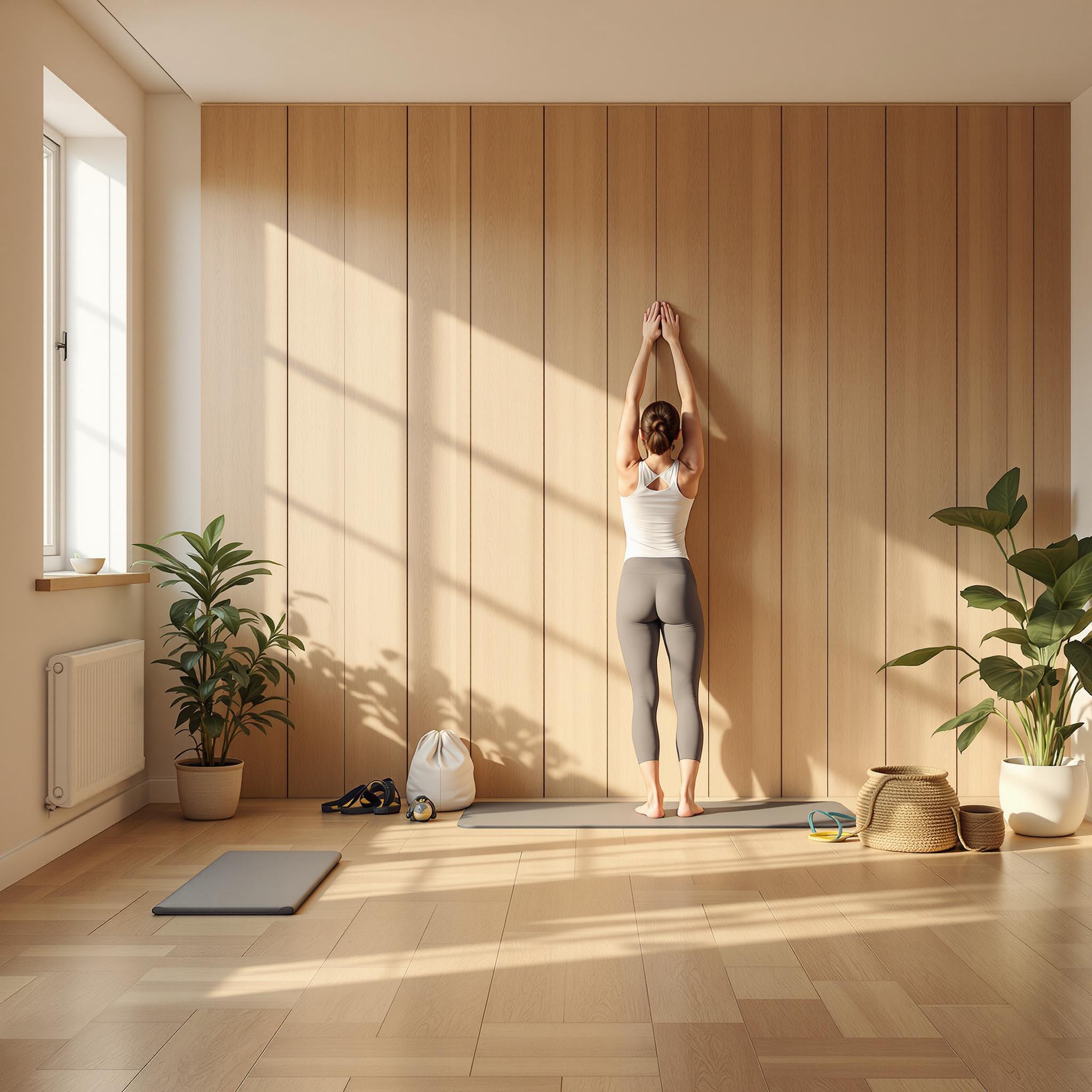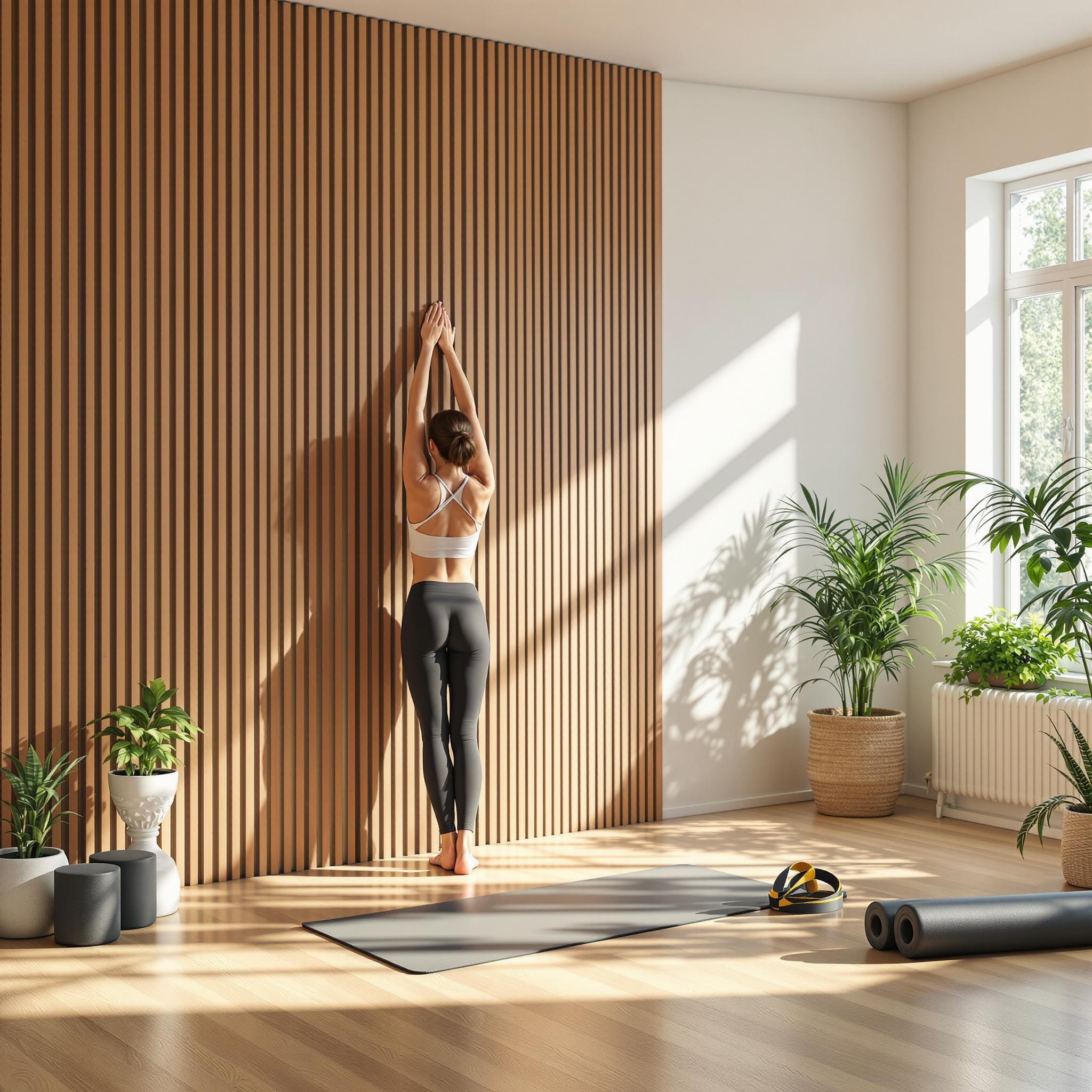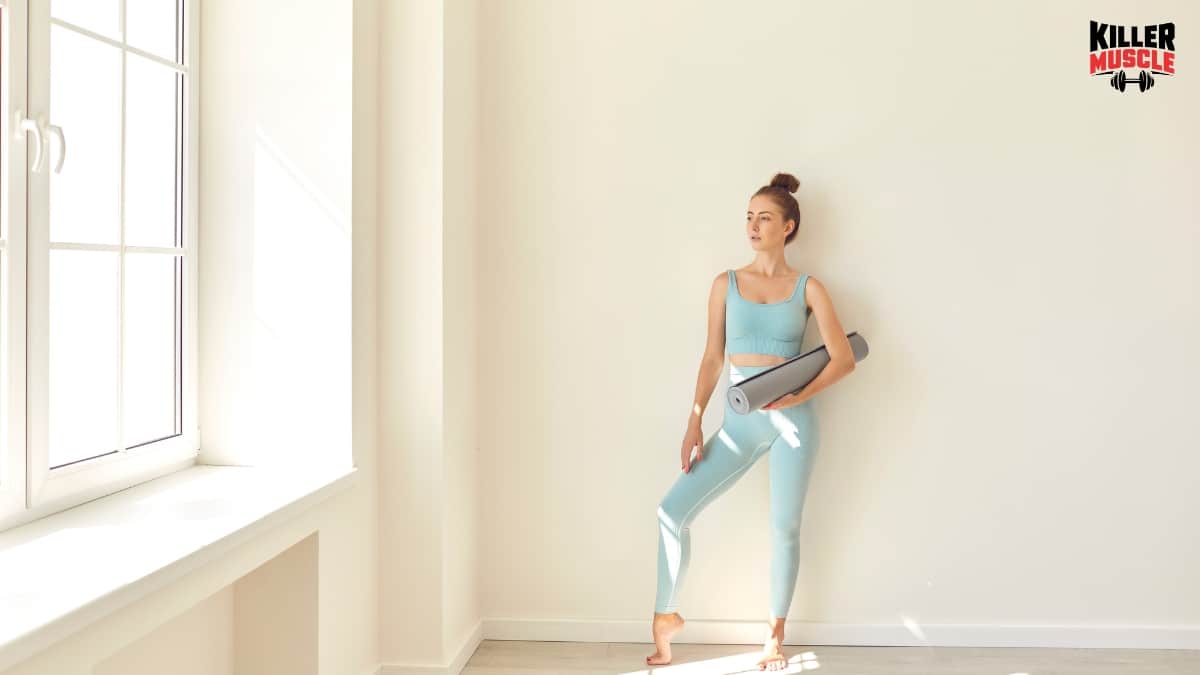Thinking about starting a beginner Pilates workout? Wall Pilates is a great way to begin your fitness journey. You only need a yoga mat and a wall to start. It’s a low-impact method that can be done at home.
Wall Pilates can make you more flexible, improve your posture, and strengthen your core. It’s perfect for those new to Pilates. Ready to change your workout routine?
Learn how this home Pilates workout, loved by millions, can help you get fit with little equipment.
What is Wall Pilates?
Wall Pilates is getting a lot of attention, with over 42.6 million views on TikTok. It’s a new way to do Pilates by using a wall. The wall helps beginners by providing support and resistance.
Introduction to Wall Pilates
Wall Pilates helps improve balance, stability, and strength. It focuses on the core and posture. Using the wall helps you get better alignment and control.
Exercises like wall squats and push-ups are part of the routine. They target different muscle groups effectively.
Benefits of Wall Pilates
Wall Pilates has many benefits. These include:
- Increased flexibility: The wall helps you stretch safely.
- Enhanced muscle tone: Regular practice can build muscle and reduce fat.
- Improved posture: Wall exercises help correct poor posture.
- Convenience: You can do it at home with just a wall.
- Accessibility: It’s great for all fitness levels, even beginners.
Wall Pilates vs Traditional Pilates
Wall Pilates uses a wall as a prop, unlike traditional Pilates. Traditional Pilates might use equipment like the Reformer. But wall Pilates is simpler and more accessible.
Wall exercises offer more resistance and stability. Both Pilates types focus on core strength and flexibility. But wall Pilates helps with better alignment and posture thanks to the wall’s support.

Benefits of Wall Pilates
Wall Pilates has become very popular. It combines traditional Pilates with the support of a wall. This method is great for all fitness levels, but beginners love it the most.
Good for Beginners
Wall Pilates is perfect for beginners. The wall helps newbies do exercises with more confidence. You can learn glute bridges, abdominal curls, and side-lying hip work easily with the wall’s help.
It’s also great for people recovering from injuries. The wall adds stability and prevents extra strain.
Low-Impact Workout
Wall Pilates is a low-impact workout. It’s gentle on your joints but works your whole body. It’s perfect for those with chronic pain or recovering from injuries.
Doing core exercises like planks and glute bridges can improve muscle tone. But, it doesn’t have the high impact of other workouts.
Cost-Effective and Accessible
Wall Pilates is an affordable way to stay fit at home. You only need a flat wall and a yoga mat. No expensive gym memberships or equipment are needed.
This makes it easy to practice anywhere, whether at home or while traveling. It’s also great for those with busy schedules. It helps them stay consistent with their workouts.
The Best Wall Pilates Exercises for Beginners
Wall Pilates exercises are becoming popular because they are easy to do and effective. They are great for those new to Pilates. These exercises help build strength, improve balance, and enhance stability. Let’s look at some top wall Pilates exercises for beginners.
Single-Leg Knee Crunch
The Single-Leg Knee Crunch is key for working your core and balance. Stand with your back against the wall and feet apart. Lift one knee towards your chest while keeping your core tight. Switch legs to balance your workout.
Wall Bridge and Calf Raise
The Wall Bridge and Calf Raise works many muscles at once. Lie on your back with feet against the wall. Lift your hips and then raise your calves by pushing through your toes. It’s great for strengthening your glutes, hamstrings, and calves.
Marching Bridge
The Marching Bridge focuses on stability and core strength. Start in a bridge position with your back against the wall. Lift one knee towards your chest while keeping your hips up. Switch legs in a controlled march. It’s a low-impact way to strengthen your core and lower body.
These wall Pilates exercises are perfect for beginners. They help build strength and stability. Adding them to your routine can improve muscle tone, balance, and flexibility. Start today and see the benefits for yourself.

Starting Your Wall Pilates Routine
Starting your wall Pilates routine is easy. First, gather the right equipment. Then, set up a good workout space. Don’t forget to warm up and cool down properly.
Essential Equipment
You don’t need much for Pilates at home. Here’s what you’ll need:
- Yoga Mat: Provides cushioned support.
- Flat, Clean Wall: Essential for many wall Pilates exercises.
You can add resistance bands to make your workout harder.
Creating a Workout Space
Having a dedicated space for Pilates is important. Make sure it’s clear and quiet. This helps you move freely and stay focused.
Warm-Up and Cool-Down Tips
Start with dynamic stretches like cat-cow poses. They get your muscles ready. After, use static stretches to cool down. This helps your body recover and stay flexible.
Be consistent with your Pilates practice. Aim for 3-4 times a week. This will help you get stronger and more flexible. For a structured program, check out the 30-Day Wall Pilates Challenge.
Tips for Success with Wall Pilates Exercises for Beginners
Starting Wall Pilates is more than just knowing the moves. It’s about the right mindset for exercising safely. Here are some key tips for a successful wall Pilates routine.
Listening to Your Body
For beginners, listening to your body is the first step. It’s important to notice how your body reacts to exercises. This helps avoid injuries and ensures you’re exercising safely.
Know when to push harder and when to slow down. If you feel pain, it’s time to adjust or seek advice. A health expert can offer beginner’s fitness advice.
Consistency and Progress Tracking
Sticking to your Pilates routine is key. Regular practice and tracking your progress can keep you motivated. Use a journal or app to record your journey.
This helps you see how far you’ve come and what works for you. It adds structure and goals to your Pilates, helping you stay on track.
Modifications and Variations
Feel free to adjust exercises to fit your comfort and skill level. This makes Wall Pilates welcoming for everyone. You can try different versions of exercises, like starting with shorter holds and increasing them.
These changes help you stay safe and injury-free while improving your strength and flexibility. By focusing on these areas, you’ll find success in your wall Pilates routine. This leads to better fitness and a more enjoyable exercise experience.
Conclusion
Starting Pilates at home with wall exercises can greatly improve your strength and flexibility. It’s perfect for beginners or those with joint issues. You only need a clear wall and a yoga mat to get started.
Regular practice brings many benefits, like better muscle control and posture. Exercises like the Single-Leg Knee Crunch target different muscles safely. A 28-day challenge can help you build strength and flexibility over time.
Listen to your body and adjust your routines as needed. This helps avoid injuries and keeps you progressing. Make these exercises a part of your weekly routine and watch your health improve. Focus on core stability, muscle control, and flexibility, all from home.

